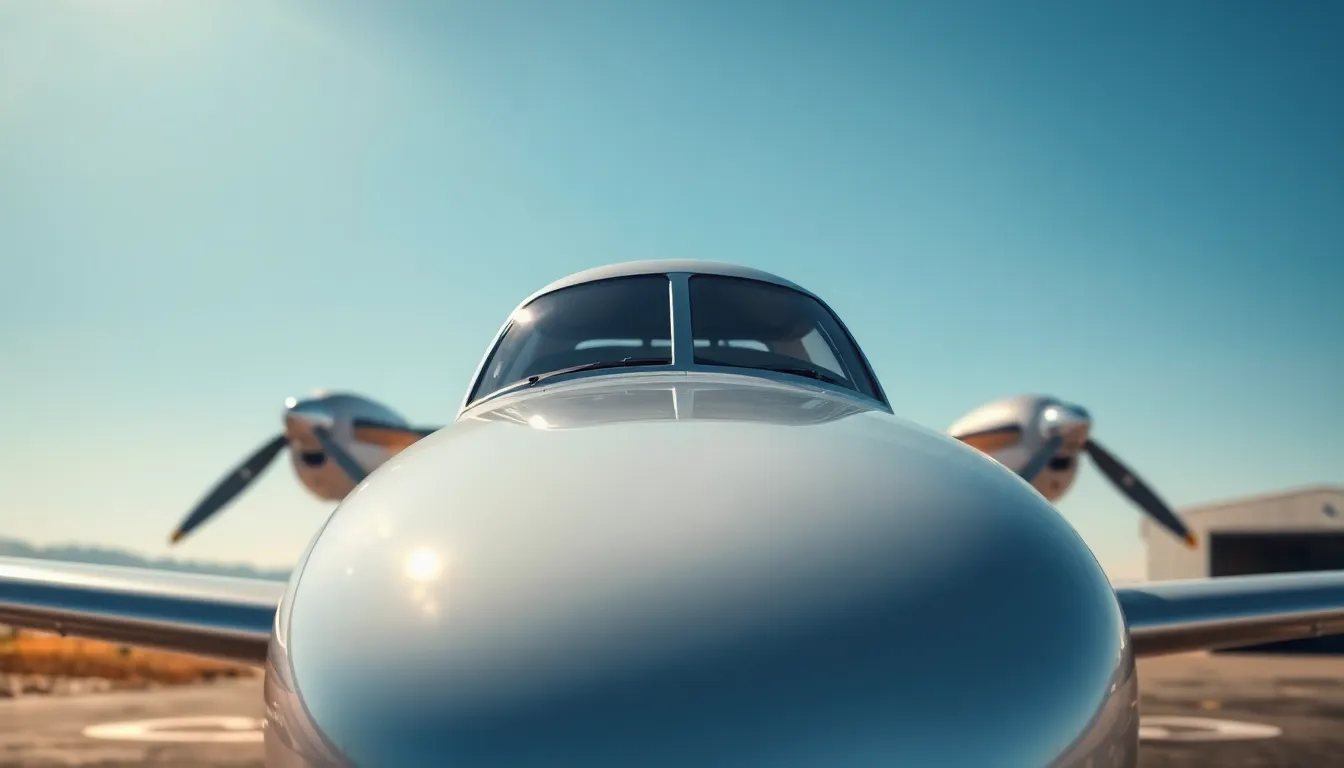When it comes to small aircraft, few names are as respected as Beechcraft. The Beech Travel Air stands tall in this category, combining charm and performance like a sophisticated cocktail at a high-end bar. Whether you’re a seasoned pilot or just daydreaming about your next airborne adventure, understanding the allure of the Beech Travel Air might just make you take to the skies. Strap in, this airline journey is about to get exciting.
Table of Contents
ToggleOverview of Beech Travel Air

The Beech Travel Air is a standout aircraft within the Beechcraft lineup. Introduced in the 1940s, this model made its mark as a versatile, light twin-engine plane suited for a variety of missions. With a design rooted in reliability and performance, it appeals to private pilots, businesses, and flying enthusiasts alike. Originally produced from 1946 to 1969, the aircraft has a rich history, contributing to its desirability in the used aircraft market today. Its straightforward design and robust performance make it a preferred choice for many, establishing it as a classic in aviation.
Design Features and Specifications
The design of the Beech Travel Air is both functional and aesthetically pleasing. This aircraft typically features a low wing configuration with a T-tail, providing better stability and control during flight. Dimensions such as a wingspan of around 40 feet and a length of about 28 feet contribute to its impressive aerodynamic performance. With seating for up to six passengers and a maximum cruising speed of about 180 knots, it offers enough space and speed for comfortable travel. The cabin is designed for comfort, often equipped with amenities that add a touch of luxury. The retractable landing gear reduces drag and enhances performance, making it ideal for various flying conditions.
Flying Characteristics and Performance
Flying the Beech Travel Air is often likened to driving a high-performance car, smooth, responsive, and exciting. Powered by either Lycoming or Continental engines, it delivers consistent performance and reliability. Takeoff and landing are both manageable, thanks to its well-balanced design, with takeoff distances as short as 1,500 feet depending on weight and atmospheric conditions. In the air, pilots appreciate its good climb rate, usually exceeding 1,200 feet per minute. The aircraft’s stability and responsive controls make it suitable for both inexperienced flyers and seasoned aviators. Also, it handles turbulence well, ensuring a smoother flight experience.
Maintenance and Ownership Considerations
Owning a Beech Travel Air comes with responsibilities. Regular maintenance is crucial, especially for older models, to ensure safety and optimal performance. While the aircraft is known for its durability, components such as the engines and landing gear require attention over time. Engaging with a qualified mechanic familiar with Beechcraft models can alleviate potential issues down the road. Owners should also factor in storage options and insurance costs, which are critical components of the overall ownership experience. Maintaining records of maintenance and any upgrades can significantly enhance resale value too.
Comparing Beech Travel Air with Other Aircraft
In the realm of light twin-engine aircraft, the Beech Travel Air often finds itself compared with models like the Piper Seneca and Cessna 414. While all three aircraft boast excellent performance, the Travel Air typically stands out for its superior climb rate and fuel efficiency. Unlike the Seneca, which may feel a little cramped, the Travel Air offers generous interior space, making it a favorite for longer trips. When lined up against the Cessna 414, the Travel Air often features simpler systems, which can be a plus for pilots who prefer a straightforward flying experience. Eventually, the choice often boils down to personal preference and flying requirements.
Ideal Use Cases and Pilot Requirements
The Beech Travel Air is ideal for various flying scenarios, from personal travel to small business runs. It’s often employed for short regional flights, making it a favorite among flight schools and private owners. Pilots interested in operating this aircraft should ideally have a multi-engine rating, along with experience flying similar aircraft types. The forgiving nature of its flight characteristics makes it accessible for those transitioning from single-engine planes. Having a good handle on navigation and communication skills is a must, ensuring safety and efficiency in the cockpit.
